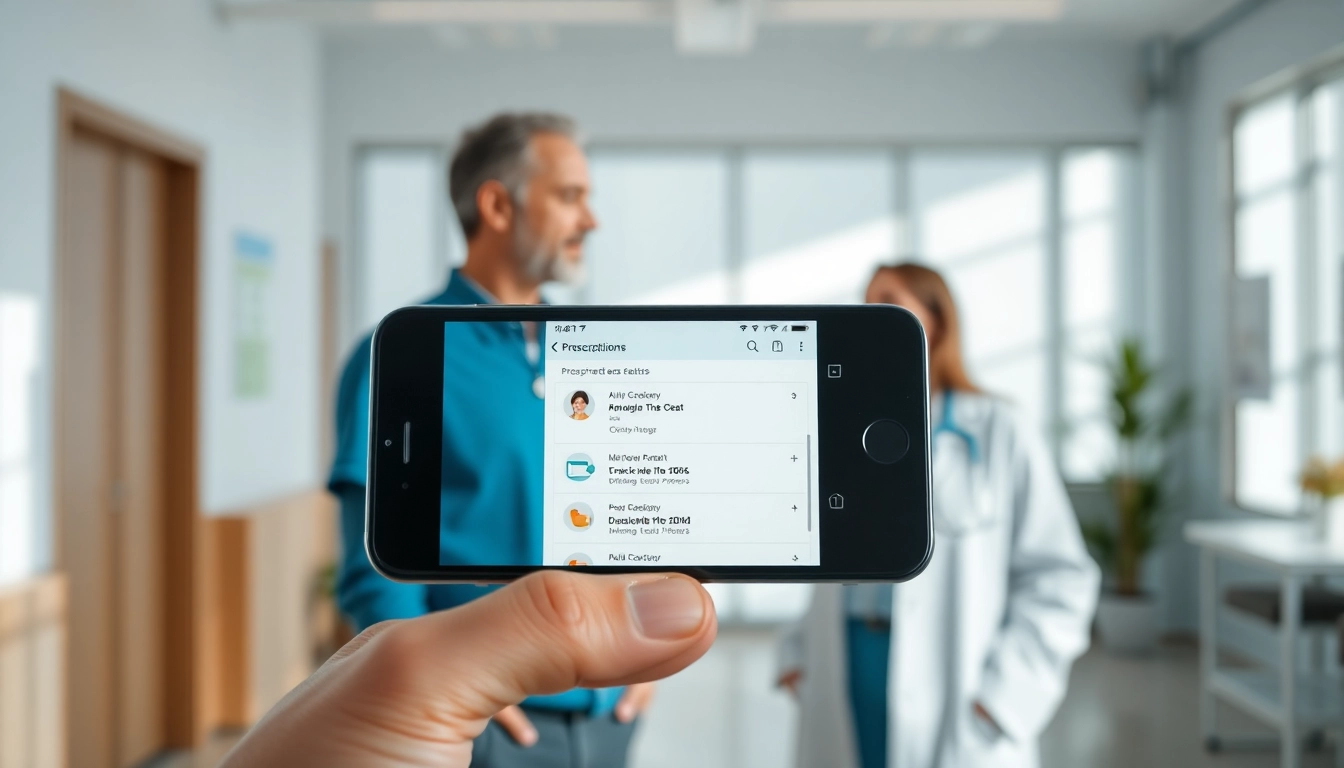Introduction to ePrescription Apps
The healthcare landscape is swiftly transforming, with digital tools leading the charge. Among these innovations, ePrescription apps stand out for their potential to enhance the efficiency and effectiveness of healthcare delivery. These apps enable a streamlined, secure way for healthcare providers to prescribe medications electronically, which can serve as a pivotal component in improving patient outcomes. Understanding the advantages of using eprescription apps can empower both providers and patients as they navigate the complexities of modern healthcare.
What Are ePrescription Apps?
ePrescription apps are digital platforms that allow healthcare providers to write and send prescriptions directly to pharmacies or patients via electronic means. This marks a significant shift from traditional paper-based systems, which can be prone to errors and misuse. Typically accessible on smartphones, tablets, or computers, these applications provide an interface that integrates seamlessly with Electronic Health Records (EHR) and Pharmacy Management Systems, ensuring that vital patient information is readily available while maintaining confidentiality and security.
The Importance of ePrescription in Modern Healthcare
The implementation of ePrescribing isn’t merely a trend but a necessity in today’s fast-paced healthcare environment. As chronic conditions rise and healthcare systems strive for efficiency, ePrescription apps provide essential tools that promote quick access to medications, improve medication adherence, and minimize the risk of errors. By automating and streamlining the prescribing process, these applications enable healthcare providers to spend more time on patient care and less on administrative tasks.
Overview of Key Advantages of Using ePrescription Apps
ePrescription apps bring a multitude of benefits to healthcare providers and patients alike. This article will delve into several core advantages, including increased convenience and accessibility, improved medication adherence, reduced errors, and enhanced cost-effectiveness for healthcare practices. Each aspect highlights a vital component contributing to improved healthcare delivery.
Convenience and Accessibility
24/7 Access to Prescription Information
One of the most significant benefits of ePrescription apps is the 24/7 access they provide to prescription information. Patients can view their medication history, refills, and instructions at any time, reducing the frustration associated with scheduling in-person visits just to check on their prescriptions. This constant availability empowers patients to manage their health proactively.
Minimizing In-Person Visits
The use of ePrescription apps significantly reduces the need for in-person consultations solely for prescriptions. For patients with chronic conditions, this is particularly advantageous. They can manage their medication needs through the app, thereby minimizing travel time, waiting periods, and associated costs. This functionality also benefits healthcare systems by optimizing their operational workflow, allowing for a focus on patients needing immediate medical attention.
Enhanced Communication Between Doctors and Patients
Effective communication is fundamental in healthcare, and ePrescription apps enhance this aspect remarkably. These platforms offer secure messaging and alerts, allowing healthcare providers to follow up on patient medication adherence and directly address any concerns. This open communication channel fosters a collaborative relationship, empowering patients to take charge of their health and keeping them informed about their treatment plans.
Improving Medication Adherence
How ePrescription Apps Encourage Patient Engagement
ePrescription apps encourage active patient participation in their treatment regimens. Many of these applications come equipped with educational resources that inform patients about their medications, including potential side effects, interactions, and dosage timings. By engaging patients in discussions about their treatments, these apps enhance understanding and compliance, leading to better health outcomes.
Automated Reminders and Alerts
A key feature of ePrescription apps is their ability to send automated reminders and alerts for medication schedules and refills. These notifications serve as essential tools in combating forgetfulness, a common barrier to adherence. By prompting patients to take their medication regularly, these apps help foster habits that contribute to the overall effectiveness of their treatment plans.
Tracking Medication Usage and Side Effects
Many ePrescription apps include functionality for tracking medication usage and reporting side effects. Patients can log their medication intake and any adverse reactions, which healthcare providers can access to make informed decisions regarding treatment adjustments. This feature not only assists in optimizing medications but also helps in detecting patterns that may require attention, thereby ensuring patients receive personalized care.
Reducing Errors and Enhancing Accuracy
Incorporating Drug Interaction Checkers
ePrescription apps often integrate drug interaction checkers that alert healthcare providers to potential adverse interactions. By cross-referencing medication profiles in real-time, these tools minimize the likelihood of prescriptions that could lead to harmful side effects. This capability exemplifies a proactive approach to patient safety, ensuring that the prescribing process is as accurate as possible.
Standardizing Prescribing Processes
The automation offered by ePrescription apps standardizes the prescribing process across healthcare systems. By adhering to specified protocols for medication prescribing, these applications help reduce variability in treatment plans. This standardization enhances the reliability of care provided, thereby improving overall patient safety and satisfaction.
Impact on Patient Safety
Patient safety is paramount in healthcare, and ePrescription apps significantly contribute to this goal. By reducing human errors associated with handwritten prescriptions, ensuring clarity, and providing access to updated medication information, these tools create an environment where patient safety is prioritized. Consequently, improved safety can lead to better health outcomes and increased trust in healthcare systems.
Cost-Effectiveness for Healthcare Providers
Reducing Administrative Tasks
Implementing ePrescription apps is a strategic move that reduces the administrative burden on healthcare staff. By automating the prescription writing and processing tasks, these applications free up significant time that providers can better spend on patient care. Consequently, practice efficiency increases, leading to greater patient throughput and satisfaction.
Lowering Operational Costs
Operational costs often escalate with traditional prescription methods due to errors, miscommunication, and time-consuming administrative tasks. ePrescription apps significantly lower these costs by streamlining the prescribing process and reducing the likelihood of prescription-related errors, which can be costly to rectify. As providers save time and reduce the chances of costly mistakes, these savings can translate into direct benefits for practices.
Long-Term Financial Benefits for Practices
While the initial investment in ePrescription technology may seem significant, the long-term financial benefits can be substantial. As practices experience higher patient satisfaction and fewer errors, the potential for increased patient retention and attraction grows. Additionally, enhanced workflows and reduced overhead create a ripple effect that positively affects the overall financial health of a practice.
Conclusion
ePrescription apps usher in a new era of convenience, efficiency, and safety in healthcare. By understanding the advantages of using eprescription apps, healthcare providers can leverage these tools to enhance patient engagement, minimize errors, and improve overall care delivery. As technology continues to evolve, the role of ePrescription apps will undoubtedly become increasingly critical in shaping the future of healthcare.



